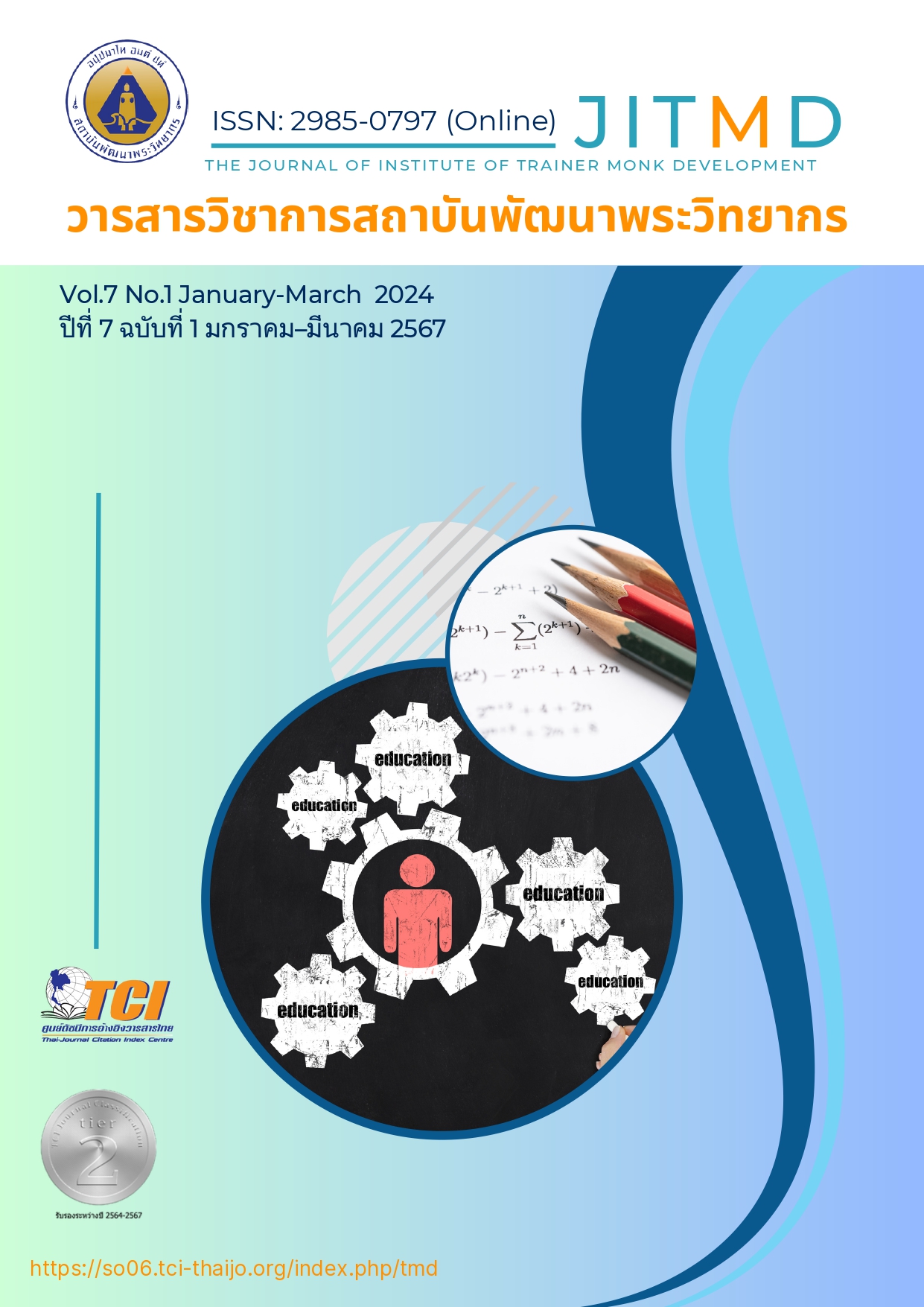The Evaluation of Leaning Necessities for Technology Teacher Learning Management Were Found to Be Complete and up to The Standard of SMT Under IPST
Main Article Content
Abstract
The objectives of this research article are to 1) identify and prioritize the learning management needs of teachers with technology, 2) analyze the causes of the learning management needs of teachers with technology, and 3) determine guidelines. Solving the necessary needs in learning management for teachers in technology. of educational institutions participating in the Quality Schools in Science, Mathematics, and Technology (SMT) project according to IPST standards. A sample group in the study of technology teachers in educational institutions participating in the Quality Schools in Science, Mathematics, and Technology (SMT) project in the academic year 2023, number A total of 188 people. The tools used to collect data include: Questionnaire and focus group discussion points Data analysis used frequency analysis, percentage, mean, standard deviation, PNI modified value, fishbone chart analysis. The research results found that 1) necessary needs for learning management of technology subject teachers include learning design and preparation Learning plans that promote creative thinking Design learning and create learning plans that promote critical thinking. and designing learning and creating learning management plans that encourage students to apply knowledge in science/mathematics/technology to solve problems. 2) The reasons for the need for learning management for teachers in technology 1) in designing activities that promote learning management skills in creative technology. critical thinking and problem solving, 2) the selection or development of information technology media, and 3) the measurement and evaluation of learning outcomes.
Article Details

This work is licensed under a Creative Commons Attribution-NonCommercial-NoDerivatives 4.0 International License.
บทความที่ได้รับการตีพิมพ์เป็นลิขสิทธิ์ของวารสารวิชาการสถาบันพัฒนาพระวิทยากร
ข้อความที่ปรากฎอยู่ในบทความที่ได้รับการตีพิมพ์ในวารสาร ถือเป็นความรับผิดชอบของผู้เขียนบทความ และข้อคิดเห็นนั้นไม่ถือว่าเป็นทัศนะและความรับผิดชอบของกองบรรณาธิการวารสารวิชาการสถาบันพัฒนาพระวิทยากร
References
ประทีป คงเจริญ. 2564. ทักษะการเรียนรู้และนวัตกรรม: คุณลักษณะสำคัญของพลโลกใน ยุคเศรษฐกิจที่ขับ เคลื่อนด้วยนวัตกรรม. วารสารมนุษย์ศาสตร์และสังคมศาสตร์ มหาวทิยาลัยธนบุรี, 15(3): 165-177.
ปาริชาต ไทยเจริญ และคณะ. (2561). การพัฒนาตัวบ่งชี้คุณลักษณะของครูวิทยาศาสตร์ในศตวรรษที่21. สาขามนุษยศาสตร์ สังคมศาสตร์ และศิลปะ, 11(2): 2217-2235.
ศรีวรรณ ฉัตรสุริยวงศ์ และมาเรียม นิลพันธุ์. (2559). กระบวนทัศน์การจัดการเรียนรู้โดยใช้ชุมชนเป็นฐานเพื่อส่งเสริมความสามารถด้านการคิดอย่างมีวิจารณญาณและการแก้ปัญหาเชิงสร้างสรรค์สำหรับนักเรียนระดับประถมศึกษา. วารสารศิลปากรศึกษาศาสตร์วิจัย มหาวิทยาลัยศิลปากร, 8(1): 183-197.
สมสกุล เทพประทุน และ ศักดิพันธ์ ตันวิมลรัตน์. 2561. แนวทางการพัฒนาทักษะในศตวรรษที่ 21 ของผู้เรียนในสถานศึกษานำร่องลดเวลาเรียน เพิ่มเวลารู้ในอำเภอบ้านโป่ง. วารสารการบริหารการศึกษามหาวิทยาลัยศิลปากร, 9(2): 124-138.
สถาบันส่งเสริมการสอนวิทยาศาสตร์และเทคโนโลยี (สสวท.). (2560). การจัดสาระการเรียนรู้กลุ่มวิทยาศาสตร์หลักสูตรการศึกษาขั้นพื้นฐาน. กรุงเทพฯ: สถาบันส่งเสริมการสอนวิทยาศาสตร์และเทคโนโลยี.
สิทธิเดช ชมจันทร์ และคณะ. (2565). การประเมินความต้องการจำเป็นเกี่ยวกับทักษะการวัดและประเมินผลการเรียนรู้ของครูระดับชั้นมัธยมศึกษา โดยใช้แบบจำลองคาโน. วารสารการวัดผลการศึกษา, 39(105): 216-226.
สำนักงานเลขาธิการสภาการศึกษา กระทรวงศึกษาธิการ. (2555). ข้อเสนอการปฏิรูปการศึกษาในทศวรรษที่สอง (พ.ศ. 2552 - 2561). กรุงเทพฯ: พริกหวานกราฟฟิค.
สํานักงานคณะกรรมการพัฒนาการเศรษฐกิจและสังคมแห่งชาติ. (2560).แผนพัฒนาเศรษฐกิจและสังคมแห่งชาติฉบับที่สิบสอง พ.ศ. 2560-2564. กรุงเทพฯ: สํานักงานคณะกรรมการ.
สุกัลยา ทิมรุณ และเอื้อมพร หลินเจริญ. (2564). การพัฒนากิจกรรมการเรียนรู้โดยใช้การวิจัยเป็นฐานเพื่อส่งเสริมทักษะการคิดอย่างมีวิจารณญาณ เรื่องชีวิตในสิ่งแวดล้อมสำหรับนักเรียนชั้นมัธยมศึกษาปีที่ 4. วารสารครุพิบูล, 8(2): 240-252.


